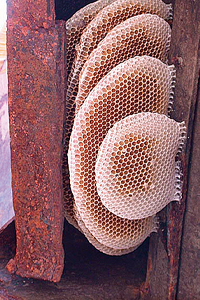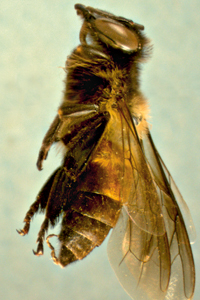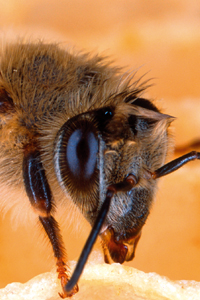The giant honey bee is commonly found in China, Indonesia, Sri Lanka, India, Pakistan and the Philippines.



Note: images are not to size
The risk to Australia
The giant honey bee carries a range of internal and external parasitic mites. These mites could infest Australian bees, resulting in a rapid reduction of domestic and commercial bee hives. This could cause serious damage to the Australian honeybee industry and related industries such as pollination providers.
What the giant honey bee looks like
The giant honey bee has dark coloured wings and is 30 to 50 per cent larger than other honey bees.
What to look for and where
The giant honey bee likes to nest in man-made structures. They can be found in or on machinery, the underside of shipping containers, hollow logs and between the linings of structures. Look for the presence of wax combs, or worker bees flying to and from ships, containers or other cargo.
SEE. SECURE. REPORT.
If you see this pest or any other pest that you think may have hitchhiked to Australia, contain it where possible and immediately report it to the Department of Agriculture Fisheries and Forestry on 1800 798 636.
For safety, consult a departmental entomologist before handling specimens.
